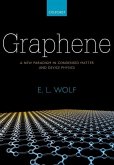"Acridinedione Dyes: Protein and Amino Acid Interaction" by A. Sumita is a comprehensive guide to the use of acridinedione dyes in studying protein and amino acid interactions. The book delves into the principles of fluorescence spectroscopy, photophysics, and the chemical properties of acridinedione dyes. The author explains how these dyes act as chromophores and bind to proteins and amino acids, making them ideal for analytical techniques such as UV-Vis, FTIR, and circular dichroism. The book explores the molecular modeling of ligand-protein interactions and protein-ligand complexes, and how these interactions can cause conformational changes in biomolecules. The text discusses the use of acridinedione dyes in studying protein folding, dynamics, and stability. It also covers protein-nucleic acid interactions and protein-protein interactions, along with the biophysical chemistry of these processes. The book explores the use of fluorescence microscopy and Förster resonance energy transfer (FRET) to visualize protein interactions, and time-resolved fluorescence spectroscopy to study excited-state dynamics. It also examines the effects of solvent on the photophysical properties of acridinedione dyes. In summary, this book provides an in-depth exploration of the use of acridinedione dyes in studying protein and amino acid interactions, making it an essential resource for researchers in the fields of biochemistry, biophysics, and structural biology. It is also useful for those interested in chemical modification, site-directed mutagenesis, and protein engineering, and provides insights into the mechanisms of protein misfolding and disease.







